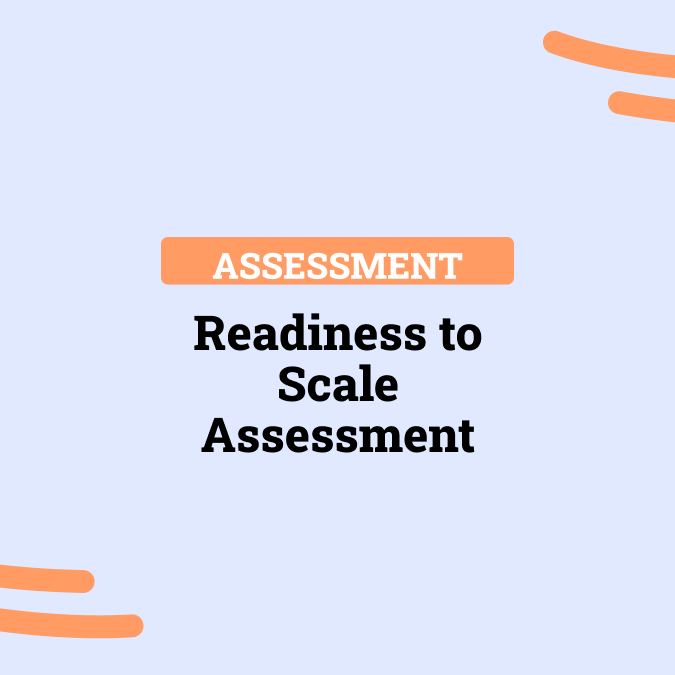“Less than 6% of startups, and small to medium businesses have a formalized advisory board and the ones that do are seeing 3X revenues and 2X productivity for a substantial impact on profitability.” Business Development Bank of Canada Report
An advisory board is a group of powerful business players working collaboratively in a safe and formalized setting to help your business grow. ~ The Advisory Board Playbook
If you’re battling to scale, maybe it’s time to consider an advisory board.
As an entrepreneur, scaling your business can be a daunting challenge. You may feel like you’re wearing too many hats, making crucial decisions alone, and struggling to stay afloat. However, you don’t have to go through it alone. Implementing an SOP for startups and having an advisory board can provide invaluable support to help you navigate the complexities of scaling your business.
According to a study by the National Bureau of Economic Research, startups that have advisory boards experience 28% higher levels of fundraising. Additionally, 94% of business leaders surveyed by The Alternative Board reported that advisory boards have a positive impact on their companies.
Still not convinced why you need input into your business?
Why do you need an advisory board?

An advisory board can provide significant benefits to a company during a scale-up phase in several ways, including:
- Strategic guidance: Advisory board members can provide valuable strategic guidance to a company, drawing on their industry experience and expertise to help identify opportunities for growth and navigate challenges.
- Industry insights: Members of an advisory board often have a deep understanding of the industry in which the company operates, providing valuable insights into market trends, customer behavior, and potential competition.
- Network and connections: Advisory board members can leverage their network and connections to help the company access new customers, partners, and investors, as well as potential hires.
- Accountability: An advisory board can help keep the company accountable to its goals and objectives, ensuring that it stays on track and maintains its focus as it scales.
- Skill and experience: Advisory board members can bring a range of skills and experience to the company, complementing the expertise of the management team and filling any gaps in knowledge or capabilities.
- Provide proven process; whether it’s through partnerships or marketing plans or product development plans–whatever area needs some guidance most urgently at any given moment in time! They also have access to relevant contacts who may be able to offer insight into how best move forward with certain initiatives (and don’t forget their own experiences).
But I don’t need help!
The RIGHT advisory board can add huge value and a competitive advantage to your business’s bottom line, BUT you’ll have to be open to getting past certain stumbling blocks that may be standing in your way;
- No one else knows my business like I do.
- It’ll cost too much
- I don’t want other people poking their nose in my business
- I’ll have to admit that we have problems and challenges
These prevailing fears often deny business owners access to exponential growth, says co-author of the book “The Advisory Board Playbook”. We recently hosted Nancy on The Unlocking Growth Show to hear her 5 step process to building an effective advisory board.
A 5 step process to building an effective advisory board
Nancy Mayer is an independent Business Advisor, Profit Strategist, Innovation Coach and the Founder of Power Play Profit Solutions, which was created to help entrepreneurs take back their power, empower their people and create a positive, collaborative work environment where people are playing at their best.
We spoke to Nancy about her 5 step process;
1. Define your Purpose

There are 4 types of advisory boards;
- Strategic advisory board
- Customer advisory board (CAB)
- Community advisory board
- Peer advisory board
Make sure you understand, first of all, the purpose of your advisory board and what you need in order to put together the right board. You have to start by understanding where you are before you can begin to envision where you want to be in the future.
Know what outcome you’re looking for by looking for organizational gaps and know what the value you’re hoping to get from your board.
2. Consider the players

Who are the people within your current sphere of influence who could fill the gaps identified? Start there and then go about dreaming who you’d love to have on the board.
Make sure you, you do your homework and be clear about your expectations for your board. A big part of the decision to work with you comes from your clarity of expectations, as stated for being part of the board.
- Look for people who have the right experience.
- Look for people who are willing to commit to a long-term relationship.
- Look for people who have a good reputation in your industry.
- Look for people who are willing to share their knowledge and experience
Don’t forget to consider and communicate compensation to your board for their participation.
3. Do the necessary preparation
A big part of the decision to work with you comes from your clarity of expectations, as stated for being part of the board.
However, the work has just begun!
Prepare your boards, make sure expectations are aligned, that you’ve briefed them well, onboarded them correctly, and are prepared to work as a team.
4. And the proper planning
Like preparation, if you want to gain the benefit of a board, then you’re going to have to design ultra-productive board meetings and winning outcomes. This means great meeting design and a phenomenal logistics plan.
Pre-meeting items could include;
- Meeting dates and meeting requests
- Meeting outcomes
- Contact details
- Clear expectations about subjects you’ll be dealing with
- A full meeting agenda prior to arrival
To have a really great advisory board meeting, it is critical to be sure that you are getting as much information from your advisors as possible.
And be sure to pay attention to meeting design to ensure you leverage the full value of your board.
5. And finally gear up for performance
Ultimately it’s all about action. In order to be successful, you’re going to have to leverage your board’s insights.
Implement and update your board members consistently. Put ideas into action with updates that cause board members to feel heard, heeded, and trusted.
Communication points to provide your advisors:
- Follow-up report: include the meeting report and summarize insights
- and strategies that arose from the gathering
- List of key projects planned
- Project management plans
- Metrics to track those projects
Bottom line?
It’s important to note that an advisory board is not the same thing as investors or customers. Nor is it the same thing as a board of Directors.
Whereas investors are interested in making money from their investment (either through equity or debt), customers are interested in purchasing products or services from you at some point in the future (or right now). Advisory boards have none of these motivations; instead, they provide assistance out of interest in seeing you succeed as an entrepreneur.
Advisory boards can offer valuable insights and advice to a company’s management team, but they do not have the same level of authority or responsibility as a board of directors, who have legal and fiduciary responsibilities to the business.
Establishing an advisory board can be a valuable step for companies looking to scale up. By bringing in experienced and knowledgeable individuals to provide strategic guidance, industry insights, network and connections, accountability, and additional skills and experience, companies can gain a significant competitive advantage and accelerate their growth trajectory. In addition, they mitigate risk on the part of the business.

Readiness to Scale Assessment
Almost everyone wants to scale their business but where to start? Take our Readiness to Scale Assessment to find out! You’ll be presented with 10 statements that correlate to one of three specific scaling stages in business.




